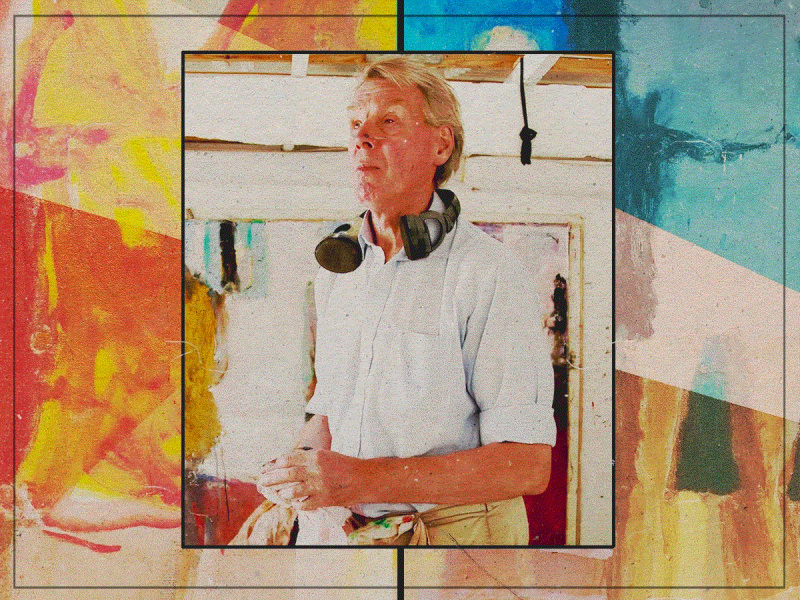Sargy Mann: the man who painted his blindness
Sargy Mann suffered perhaps the cruellest kind of ailment for an artist: the loss of his sight. A decade after his first exhibition, his vision started to worsen, and what started as cataracts in both eyes soon became full retinal detachments. Preventative surgeries followed, but he was registered blind by 1988. Mann never stopped wanting to create, never abandoning art but choosing to adapt his painting style, leaving behind not only an incredible body of work but an inspiring legacy of determination in the face of a life-altering ailment.
Mann’s attitude was always to find solutions and humour in his situation. He joked that when he had cataract extractions in both eyes, he was pleased they were the same shade of orangey brown that Monet’s had been. After the surgery, he compared his newfound experience of colour to a time he had taken acid. Years later, in 1976, a retinal detachment left him blind in his right eye, and he suffered a detached retina in the left.
The endless operations he went through in the 1980s seem to make his eyesight on the left side worse, which he approached with genuine intrigue. “This was what interested me – changed sight,” he wrote in the BBC. “After each convalescence, I had to learn again to see the world and to try to paint it.” During one operation, his iris was cut and didn’t close when faced with bright light as a normal eye would. So came another adjustment, and he started wearing dark glasses in low lights in a bid to retrain his iris to function properly.
In the late ’80s, he had his first one-man show, which made him enough money to go abroad. From then until his “total blindness” hit, he spent time in Italy, France, Portugal, and India – because he always preferred to paint in bright light. “I had to spend the first day in a darkened room in a sort of fever while my brain adjusted to the much brighter level of ambient light outside,” he explained. “Then, on the second day, I went out and discovered an astonishingly different and beautiful world of new bright light.”
In 1989, an eye hospital registered him as blind. “Not partially sighted”, he reiterated, “but blind”. While this revelation must have been incredibly hard to hear, it was almost worsened by the fact he had actually told the hospital that he could sense a tear in his retina multiple times. “They, however, failed to detect this with their instruments and sent me home, only to acknowledge, when I went back a day or two later, that I had been right all along,” he said.
Following that news, in 1990, he moved from London to Suffolk and had to entirely give up oil painting. Mann, who was a prolific landscape artist, shifted to more figurative works on a bigger scale. He’d often use six-foot-wide canvases, working from memory and tape recordings to inform his work. Moorfields Eye Hospital had given him a magnifying monocular so he could read bus numbers, and he found if he used it when painting, he got to explore a subject in two different senses.
“I would make rhythmical passes through its space – near to far, low to high, high left to low right, etc. – while recording what I thought I was understanding of the space of the subject on a dictaphone,” he said of his painting process. “Then, from time to time, I would focus hard on someplace in the subject, trying to intensify its reality in my experience.”
As Mann’s eyesight worsened, he simply sought out brighter climates like India and Spain or used blue tac as a touchpoint on large canvasses. Robbed of the one thing that enabled him to paint, he proved that artistic vision didn’t always require its literal meaning. He found a way to translate memory and touch in his work that transcended sight, creating an altogether unique experience on the canvas.
In the final weeks of his life, he declared: “I would never have chosen to become a blind painter, but I have been thrilled to discover that I can make paintings without sight and that this activity is far more like a continuation of my painting experience than I could possibly have imagined.”
